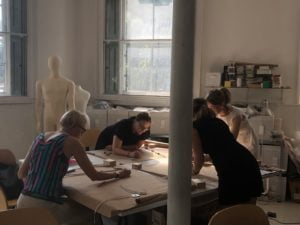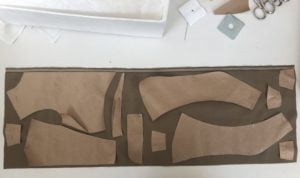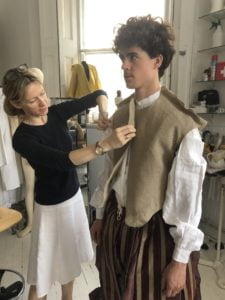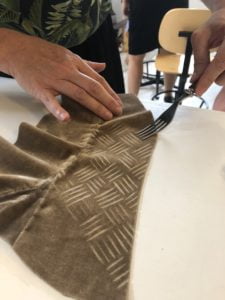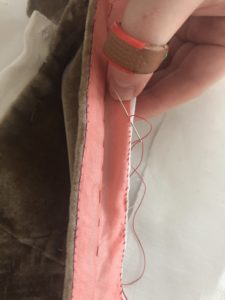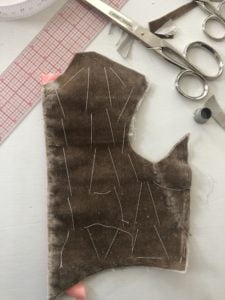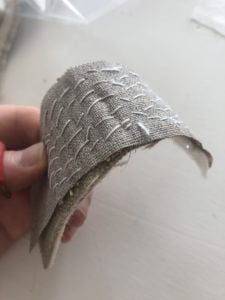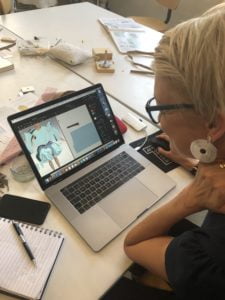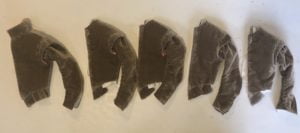Doublet making
Date: 26–31 August 2019
Location: The School of Historical Dress, London
Expert maker: Jenny Tiramani, Claire Thornton
How did early modern tailors create sculptural fashion? Can we reconstruct objects that no longer survive from textual sources? What skills and materials are required to make an early modern doublet?
Doublets are upper-body garments, named for their double-layers, that were worn by men (and sometimes women) during the sixteenth- and seventeenth centuries. They are sculptural garments, often padded and shaped with layers of quilting, reeds, and whalebone, and are decorated on the surface with slashes, pinks, and stamping. The wide range of skills, techniques and materials used to make a doublet makes them one of the most complex and innovative garments of the early modern period. While almost all of our artisans owned several doublets, very few survive from the era. So how can we make the sartorial choices of Renaissance artisans visible? The aim of this workshop was to explore how we can make a seventeenth-century artisan doublet by combining a wide-range of sources and using experimental methods.
This week-long workshop was organised by Sophie Pitman and led by Melanie Braun, Claire Thornton and Jenny Tiramani at the School of Historical Dress.
Aims:
- To experience all the steps in making a doublet, from drafting a pattern, economically using materials, shaping and stitching, and adding decoration and buttonholes
- To understand the tools and materials used by tailors
- To explore how we can create a doublet, based on our data from Italian inventories, that would have been worn by a fashionable artisan
- To experiment with stamping techniques that were fashionable amongst the Italian artisans in our dataset
- To see how we can combine hands-on reconstruction with digital animation
Outcomes:
- A much clearer understanding of the processes used and developed by skilled tailors during the period
- We better appreciate the nuances and limitations of written information and images in surviving pattern books, and understand what tacit tailoring knowledge was not written down
- We successfully stamped velvets, and were able to create half-size sample doublets showcasing a range of stitches and materials
- We engaged in conversations about what we want to achieve in commissioning a doublet based on our Italian data, and how to combine this with visual and material evidence
- We started to nuance the aims of our animation experiment


